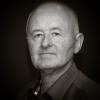-
Posts
195 -
Joined
-
Last visited
-
Days Won
5
Reputation Activity
-
 Larry Bolch got a reaction from George_P in How to achieve tungsten white balance on XT1?
Larry Bolch got a reaction from George_P in How to achieve tungsten white balance on XT1?
Auto white balance does not work for a good reason. Early in the digital era, some engineer decided to make auto white balance full spectrum. It worked well indoors, giving a nice neutral balance. Everyone was happy—that is until someone shot a glorious sunset. Yup—neutral balance as if it was shot at noon.
Not everyone was happy then.
If one is shooting in mixed lighting or unknown lighting, there is the Custom balance feature that works very well. Select it and point the lens at a known neutral tone. There are grey cards specifically designed for this, but a sheet of white paper will work as well. Just make sure the reading is done at the subject position.
-
 Larry Bolch got a reaction from PascallacsaP in Lightroom for x-trans... seriously?
Larry Bolch got a reaction from PascallacsaP in Lightroom for x-trans... seriously?
Sigh...
The ever recurring thread. It will go on endlessly between those who view images on a pixel level vs those who view images normally. The pixel peepers will become personal and abusive and the photographers will respond in kind. Pixel peepers will fight among themselves over alternate software, each promoting their favourite, with contempt for the others who don't see the difference.
As the thread finally winds down, someone else will blame Lightwave for waxy skin and it will begin all over again.
<sigh>"Sigh"</sigh>
-
 Larry Bolch got a reaction from kalns in What Lens Should I Buy Next?
Larry Bolch got a reaction from kalns in What Lens Should I Buy Next?
No definitive answer, but you may weigh my opinions against your own. The neat thing is that whatever you choose, you know you are buying a premium quality lens. The lower priced lenses, of course, involve compromise but optical quality is not compromised.
"Small dark clubs" screams for an f/1.4—I have the 35mm and regularly get blown away by how sharp it is wide open when shooting in available darkness. You have the f/2.0 23mm so an f/1.4 would be redundant. I have not used it, but I read much praise of the 16mm also at f/1.4. It would give you enormous capability at the wide end.
I am a big fan of the 60mm as a general purpose medium telephoto. The close-up feature is a big bonus. However, there would be a degree of redundancy with your 56mm. It serves my needs so well, that I have never considered the 56mm.
No experience with the 27mm, but it achieves its low price via being f/2.8 and skipping the aperture ring. I understand from reviews that it is very sharp. The difference in focal length between it and your 23mm lens is really not significant. Again a degree of redundancy.
I shoot primes on my X-Pro1, so don't have experience with zoom Fujinons. However, I do have zooms on other cameras and the 18-135mm would be an excellent choice for travel simplicity. Great for working outdoors, a bit slow for available darkness. However, Fuji noise is quite pleasant and worth shooting at higher ISO settings if it means getting the image or not. Fuji claims a five stop image stabilisation capability, which would help a bunch in low light.
-
 Larry Bolch got a reaction from mcdesign in Lightroom for x-trans... seriously?
Larry Bolch got a reaction from mcdesign in Lightroom for x-trans... seriously?
Sigh...
The ever recurring thread. It will go on endlessly between those who view images on a pixel level vs those who view images normally. The pixel peepers will become personal and abusive and the photographers will respond in kind. Pixel peepers will fight among themselves over alternate software, each promoting their favourite, with contempt for the others who don't see the difference.
As the thread finally winds down, someone else will blame Lightwave for waxy skin and it will begin all over again.
<sigh>"Sigh"</sigh>
-
 Larry Bolch got a reaction from RickUrb in Lightroom for x-trans... seriously?
Larry Bolch got a reaction from RickUrb in Lightroom for x-trans... seriously?
Sigh...
The ever recurring thread. It will go on endlessly between those who view images on a pixel level vs those who view images normally. The pixel peepers will become personal and abusive and the photographers will respond in kind. Pixel peepers will fight among themselves over alternate software, each promoting their favourite, with contempt for the others who don't see the difference.
As the thread finally winds down, someone else will blame Lightwave for waxy skin and it will begin all over again.
<sigh>"Sigh"</sigh>
-
 Larry Bolch got a reaction from meloaku in Mitakon, Metabones, Roxsen, Camdiox, focal reducers, share your experiences.
Larry Bolch got a reaction from meloaku in Mitakon, Metabones, Roxsen, Camdiox, focal reducers, share your experiences.
A local store had both the Metabones Speed Booster and adapter, so for convenience bought both. Simply, they worked. No drama, no workarounds, no esoteric tips needed.
Most of my shorter Nikon lenses are redundant to my Fuji primes, but not the longer lenses. I specially like my f/1.8 105mm with and without the Speed Booster. More than adequately sharp wide open, and with the reduced focal length, a f/1.2 105mm field of view. I found that my Perkin Elmer (marketed by Vivitar) 600mm Solid Cat mirror lens, very difficult to focus with either the adapter or Booster. No loss, it is massive and very heavy. While rated as a f/8.0, it is more like a t/11.0—quite a dark view. I also tried my 28mm PC-Nikkor shift lens and it worked fine. I have the excellent Fuji 60mm, but if I needed to work even closer, my 55mm MicroNikkor would do the job. Macro does not lend itself to autofocus, so the 55mm would not be a problem. Again, I could use it with or without the booster.
-
 Larry Bolch got a reaction from DashingElegance in Lens for travelling on low light
Larry Bolch got a reaction from DashingElegance in Lens for travelling on low light
One of the best landscapes of the past year, I shot with a 200mm equivalent focal length. Very dramatic mountain against storm clouds. On the other hand, I love photographing prairie with superwide lenses, emphasising the vastness. For landscape features, any focal length between the two. I often shoot panoramas with lenses around 100mm and stitch them together. Very high pixel count and extremely high detail. The 35mm with its extreme sharpness works extremely well with both in-camera stitching and stitching in processing.
I am a great fan of OIS since much of my shooting is done in available darkness or extreme focal lengths. However, I accept it is a very limited solution to a fairly rare range of problems. With my X-Pro1 and X100, I am shooting primes exclusively. My subjects are almost all people living their lives. OIS with the Fuji cameras would be no advantage at all. I have learned to hand-hold with sufficient steadiness to ensure sharp results. Lean against walls, rest your elbows on a table or chair back. Crank the ISO up to whatever is needed. A bit of noise trumps satin blurs every time. No matter how smooth, with no detail, your image is ruined.
Just as learning to steer a bike so you don't end up in the canal, learning to hold a camera steady is one of the fundamentals to be practised and learned. It is fundamental to all photography. With practice, you find out how slow a shutter speed you can risk with any given focal length. For APS-C cameras, a person in prime condition may be able to use the 1/1.5×focal length rule of thumb. It would say that the lowest shutter speed for the 35mm lens would be 1/52.5th of a second—1/60th in the real world. Shorter exposures are generally preferable. Wide apertures and high ISO ratings provide these goodies. Keep an eye on your results and change your workflow to suit. It is no more difficult to become a musician on a new instrument than to be a photographer fluent with a new camera. Nor is it easier. In both cases, study and practice wins the day. We are not born with the skills and knowledge, but we can learn and practice.
-
 Larry Bolch got a reaction from Ranz in Lightroom for x-trans... seriously?
Larry Bolch got a reaction from Ranz in Lightroom for x-trans... seriously?
Sigh...
The ever recurring thread. It will go on endlessly between those who view images on a pixel level vs those who view images normally. The pixel peepers will become personal and abusive and the photographers will respond in kind. Pixel peepers will fight among themselves over alternate software, each promoting their favourite, with contempt for the others who don't see the difference.
As the thread finally winds down, someone else will blame Lightwave for waxy skin and it will begin all over again.
<sigh>"Sigh"</sigh>
-
 Larry Bolch got a reaction from Curiojo in Travelling Lenses.
Larry Bolch got a reaction from Curiojo in Travelling Lenses.
Hopeless to get a definitive answer. It is not about geographically specific demands upon lenses, but rather the focal lengths you yourself find comfortable in a given photographic situation.
There are no wide-angle countries, no telephoto countries nor any 18-55mm specific countries. Wherever you go, you will find narrow alleyways and broad plazas. Flowers native to the region photograph no differently from those outside your door. Superwide lenses can make some sweeping vistas seem vast, but a panorama shot with a normal lens will capture even more. On the other hand, a telephoto can strongly emphasise a unique landscape feature. A lens that works well on a tall person will work fine on a shorter person. A bird is a bird, and photographs about the same no matter where you find it.
I love travel photography and I could post an inventory of my kit on the most recent trip. It would do you no good. I used everything from a fisheye to the equivalent of a 2,000mm on a bridge camera. It is very unlikely that we work and see identically, so even if I posted along with examples and expressed my reasons for lens choice, they would not necessarily resonate with you at all. Even though it was a journey through the Rocky Mountains and I live in a rather flat city, what I used there is what I use here. Your eye and your workflow dictate the lenses—not the destination.
-
 Larry Bolch got a reaction from PoulWerner in Lightroom for x-trans... seriously?
Larry Bolch got a reaction from PoulWerner in Lightroom for x-trans... seriously?
Sigh...
The ever recurring thread. It will go on endlessly between those who view images on a pixel level vs those who view images normally. The pixel peepers will become personal and abusive and the photographers will respond in kind. Pixel peepers will fight among themselves over alternate software, each promoting their favourite, with contempt for the others who don't see the difference.
As the thread finally winds down, someone else will blame Lightwave for waxy skin and it will begin all over again.
<sigh>"Sigh"</sigh>
-
 Larry Bolch got a reaction from Adam Woodhouse in Lightroom for x-trans... seriously?
Larry Bolch got a reaction from Adam Woodhouse in Lightroom for x-trans... seriously?
Sigh...
The ever recurring thread. It will go on endlessly between those who view images on a pixel level vs those who view images normally. The pixel peepers will become personal and abusive and the photographers will respond in kind. Pixel peepers will fight among themselves over alternate software, each promoting their favourite, with contempt for the others who don't see the difference.
As the thread finally winds down, someone else will blame Lightwave for waxy skin and it will begin all over again.
<sigh>"Sigh"</sigh>
-
 Larry Bolch got a reaction from Jürgen Heger in Lightroom for x-trans... seriously?
Larry Bolch got a reaction from Jürgen Heger in Lightroom for x-trans... seriously?
Sigh...
The ever recurring thread. It will go on endlessly between those who view images on a pixel level vs those who view images normally. The pixel peepers will become personal and abusive and the photographers will respond in kind. Pixel peepers will fight among themselves over alternate software, each promoting their favourite, with contempt for the others who don't see the difference.
As the thread finally winds down, someone else will blame Lightwave for waxy skin and it will begin all over again.
<sigh>"Sigh"</sigh>
-
 Larry Bolch reacted to Michael McKee in a successful adapted 6400 mh battery pack for fuji x system ILC`s
Larry Bolch reacted to Michael McKee in a successful adapted 6400 mh battery pack for fuji x system ILC`s
Changing batteries when you have a break in action is a skill. It just takes practice. It's only a problem if you don't take the time to learn to. With enough practice you'll do it automatically and not even notice that you've done it.
I shot with 36 exposure rolls for decades, some of that time as a newspaper reporter. I always got my assigned shots. Maybe that's because I also learned to anticipate the appropriate moment and didn't, and still don't rely on burst mode, most of the time. Another skill that isn't that hard to learn.
Yes, my old Nikon could get over 1000 exposures on a battery. I don't miss it.
-
 Larry Bolch got a reaction from mallyph in a successful adapted 6400 mh battery pack for fuji x system ILC`s
Larry Bolch got a reaction from mallyph in a successful adapted 6400 mh battery pack for fuji x system ILC`s
Can you just imagine how disturbed they would be in the film era? When the roll was done in 24-36 exposures with 35mm or with 8, 10, 12 or 16 with medium format 120 rolls, and they would have to stop and spend minutes changing film? Now with batteries providing 200 to 500 exposures, they lack the foresight to recognise a five-second pause to change batteries.
Hey, you don't have to absolutely exhaust the current battery before you change it! When the indicator shows you are getting low, pick a pause and insert a fresh battery. If you are obsessed by that few second pause, perhaps counselling is in order.
-
 Larry Bolch got a reaction from Sluw in Fujifilm Launches the “MK lens” Series of Innovative Cinema Lenses // Samples - First Looks
Larry Bolch got a reaction from Sluw in Fujifilm Launches the “MK lens” Series of Innovative Cinema Lenses // Samples - First Looks
According to the press release: "The entire “MK” series is designed with the ‘emerging’ cinematographer in mind, whether shooting a live event, online programming, documentary, corporate video, wedding, independent or short film production." pretty much defines the target market. And no, this does not indicate a mass migration from Arri, RED and others. Where the demand warrants it, they will most certainly continue to be used. Those in the above categories may simply not have the budget for higher end equipment, and the X-T2 plus MK lens will do the job to the client's expectations and within the budget. A lot of people make a decent living serving these markets even though they may go unnoticed by the general public, weddings excluded. These are working professionals, not soccer-moms trying to film junior's whole game. A ten minute take from a single viewpoint would be paralytically boring to the point of ending the ‘emerging’ cinematographer's career. Watch this kind of product, and you will see an ever-changing viewpoint with clips just seconds long. Even with live sports or events, there is constant cutting from camera to camera. Cinematography 101. There are endless examples on the web to verify this or simply turn on the TV. In real-world video making, takes are in seconds, not minutes. Fuji sees a new market opening up, and has designed two lenses to serve it. The X-T2 is getting respect from the potential customers for such a system. If the market continues to grow, Fujifilm might well decide to use the core technology of the X-T3 or X-T4 to offer a dedicated cine body. This is just step one in what might eventually become a quite profitable new line. Only the iPhone generation camps on a single viewpoint, single focal length and expects it to be watched. This is not Fuji's target customer. -
 Larry Bolch got a reaction from adzman808 in GFX & f2 lenses spell the end for high end, x lenses
Larry Bolch got a reaction from adzman808 in GFX & f2 lenses spell the end for high end, x lenses
Are you asking if the GFX lenses will crowd the X-mount lenses out, or at least slow down development of new lenses?
Realise that still camera lenses are just a small part of the extensive range of lenses made by Fujinon. This includes the Hasselblad branded lenses that were initially developed for the Fujifilm GX645AF, which was rebranded as the Hasselblad H1. This gives the GFX a ready to use lineup of lenses with shutters to work with the announced adapter.
At this moment B&H Photovideo in NYC is showing 87 individual video Fujinons ranging in price from an entry level of $3,900US to a high end $233,490.00 for a single lens. Turn on your TV and chances are great whether it is a daytime drama or the biggest game of the season, you are probably seeing what a Fujinon is capturing.
https://www.bhphotovideo.com/c/search?Ns=p_POPULARITY%7c1&ci=1884&setNs=p_POPULARITY%7c1&N=3908282152+4291437653&srtclk=sort
Add in nine ciné lenses from $16k to just short of $100k and 28 industrial lenses. All that from a single store.
From an initial three lenses—a typical photojournalist's kit—in five years Fuji has covered much of the range of focal lengths and types that the big two have had more than half a century to produce. Just sticking with Fujinons, not many photographic specialities are excluded. Plus third party lenses have come on strong to fill out the lines. Again checking B&H, they have 93 lenses for sale in the X-Mount at the moment.
It seems to me, that we have little to worry about.
-
 Larry Bolch got a reaction from idbugs in FUJIFILM will develop an XF 8-16mmF2.8 WR lens
Larry Bolch got a reaction from idbugs in FUJIFILM will develop an XF 8-16mmF2.8 WR lens
I discovered that I have an extreme wide angle lens I did not recognise. It might be useful to know for anyone who has this lens.
I have the Samyang 8mm fisheye. A few days back, I noticed that Adobe Camera RAW has a profile for it on an X-camera. Clicked to see what would happen and it was rendered as rectilinear. It pretty much retains the short side, but crops a bit on the long side. No idea what focal length is the equivalent, but clearly all the problems of shooting super-wide are there. If the camera is tilted, the foreshortening is dramatic. With the camera straight with the world, lines are straight and perspective is profound.
-
 Larry Bolch got a reaction from Curiojo in X-T2: Does it work for Hockey?
Larry Bolch got a reaction from Curiojo in X-T2: Does it work for Hockey?
A few years back, I also shot hockey but with my X-Pro1. Also young guys.
http://www.larry-bolch.com/ephemeral/hockey/index.html
Remote northern town (St. Paul, Alberta), low light in the town rink. I tested and found that at f/4.0 with the 60mm lens focused on the goal, everything from the opposite boards to the point where the players over-ran the frame was in focus. I just left it at that and shot. I used the white on a jersey for setting my white balance. I could, of course, fine tune it in processing, but the balance remained accurate. At ISO6400 the exposure was 1/500th at f/4.0. However, the histogram showed that I could safely under-expose by -1.0EV and still have full shadow detail, so I shot at 1/1000th and pushed it a stop in processing. Very sharp images with zero blurs.
The OVF was superb. I could see outside the frame area and quickly grab any action that an EVF or SLR would have missed. I could not imagine a better camera/lens for covering hockey.
A typical shot.
-
 Larry Bolch got a reaction from algrove in Phase One will NOT support the Fujifilm GFX
Larry Bolch got a reaction from algrove in Phase One will NOT support the Fujifilm GFX
All RAW files are based on the extended TIFF format specifications. It is more a "container" than just an image format. If the opening application is programmed to ignore aspects of the format, it will not open. If the GFX is a roaring success, it is Phase One's loss—both in terms of hardware AND software. So very 20th century in business terms.
-
 Larry Bolch reacted to CplGumby in X-T2: Does it work for Hockey?
Larry Bolch reacted to CplGumby in X-T2: Does it work for Hockey?
Tried the X-T2 with 50-140 at another game but this time I was on the bench instead of shooting though plexi. These are JPG images using Providia (?)
Big difference! A bit of post to reduce the contrast and blacks as the fuji really saturates the image.
-
 Larry Bolch got a reaction from lauriebrett in Get the 56mm f1.2 lens or wait for the 50mm f2?
Larry Bolch got a reaction from lauriebrett in Get the 56mm f1.2 lens or wait for the 50mm f2?
Or go for the 60mm which is also available. It will not do just a single eye in focus unless you are extremely close. I am far more concerned about that part that is in focus, rather than that which is out, but people do frequently praise its bokeh. It has great sharpness wide open which only gets better when stopped down a couple of stops. Its close focusing ability and flatness of field are to be appreciated. With the long range in macro mode, it is not one of the fastest to achieve focus, but a half-press will pre-focus eliminating the issue. (Develop a pre-focus habit and I am sure the f/1.2 problem would go away as well.) As a short telephoto, it is easy to use and very handy—lightweight and compact. Above all, it is highly affordable.
-
 Larry Bolch reacted to George_P in Long exposure help
Larry Bolch reacted to George_P in Long exposure help
Larry, neither have I to be honest but when I found some of my shots to be soft and they were made with me having forgot to switch OIS off, that is what I attributed it to as I always use the self-timer on tripod. Good idea to test it, I will do it sometime. Of course, we don't know what lens the OP is using, if he has OIS on them or not.
Another thing comes to my mind, if he is shooting lights like street lamps or even stars, I think it could be a good idea to take off a filter if there is one. Cheers and all the best for this new year.
-
 Larry Bolch got a reaction from frankinfuji in Get the 56mm f1.2 lens or wait for the 50mm f2?
Larry Bolch got a reaction from frankinfuji in Get the 56mm f1.2 lens or wait for the 50mm f2?
Or go for the 60mm which is also available. It will not do just a single eye in focus unless you are extremely close. I am far more concerned about that part that is in focus, rather than that which is out, but people do frequently praise its bokeh. It has great sharpness wide open which only gets better when stopped down a couple of stops. Its close focusing ability and flatness of field are to be appreciated. With the long range in macro mode, it is not one of the fastest to achieve focus, but a half-press will pre-focus eliminating the issue. (Develop a pre-focus habit and I am sure the f/1.2 problem would go away as well.) As a short telephoto, it is easy to use and very handy—lightweight and compact. Above all, it is highly affordable.
-
 Larry Bolch got a reaction from Doug Pardee in Has there ever been talk of Fuji making a dedicated manual-focus camera?
Larry Bolch got a reaction from Doug Pardee in Has there ever been talk of Fuji making a dedicated manual-focus camera?
Worth pointing out the obvious. Pretty much every manual focus lens made in the past half-century has an adapter for the X-mount. If you really want manual focus, you have the choice of dozens of lenses, mostly at very reasonable prices. Of course, auto-focus can be disabled at the flick of a switch with our Fujinon lenses. Personally, under the circumstances, I see no reason to disable auto-focus permanently.
That said, auto-focus issues have been the most common complaints in Fujifilm forums. Auto-focus is clearly a priority among the more vocal X camera users.
-
 Larry Bolch got a reaction from Tikcus in Sony Stops Making 16MP Sensors :: Fujifilm 16MP X-Cameras Affected :: Fujifilm X70 Already Marked as Discontinued
Larry Bolch got a reaction from Tikcus in Sony Stops Making 16MP Sensors :: Fujifilm 16MP X-Cameras Affected :: Fujifilm X70 Already Marked as Discontinued
I just can not get excited by the problems of storage and burden of processing 24MP files. Drives of enormous size are highly affordable, as is RAM. Image processing is not so CPU critical as it is RAM critical. If one feels the need for fast file loading, a small SSD work-drive solves the problem. I never work on original files but rather tag the ones I want for the project and copy them to my work drive. I often work with medium-format scans that are well over 200MB. and they present no problem on a well specified five year old machine.














